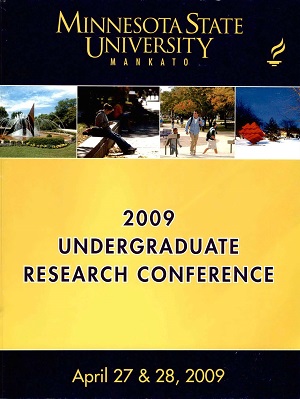Communicating Without Words: The Effectiveness and Future of Purely Visual Advertisements
Location
CSU 204
Start Date
27-4-2009 8:00 AM
End Date
27-4-2009 10:00 AM
Student's Major
Communication Studies
Student's College
Arts and Humanities
Mentor's Name
James Dimock
Mentor's Department
Communication Studies
Mentor's College
Arts and Humanities
Description
In 2005 Marthe and Francois Girbaud created an advertising campaign that not only differed from any other advertisement released but held the potential to revolutionize the schema of advertising. The advertisement depicts a distorted view of Leonardo da Vinci's Last Supper painting where Christ and the Apostles are replaced by female figures. The campaign is analyzed through the comparison of J. Anthony Blair's article entitled: The possibility and actuality of visual arguments published in Argumentation and Advocacy in 1996. Themes from the original painting are reinterpreted to present not only controversial, but conflicting elements that effectively change the meaning of da Vinci's original piece. This purely visual campaign garnered the attention of the Catholic Church and marketing and fashion industries. Even though the advertisement generated so much attention from the Catholic Church that the institution responded with legal action, the world media gave surprisingly little attention to the advertisement, leaving it up to the researcher to determine its potential success or failure had it been fully released. This rhetorical analysis discusses the Girbaud Last Supper campaign and the ways in which it would have succeeded and failed in influencing both the consumer and the advocate.
Communicating Without Words: The Effectiveness and Future of Purely Visual Advertisements
CSU 204
In 2005 Marthe and Francois Girbaud created an advertising campaign that not only differed from any other advertisement released but held the potential to revolutionize the schema of advertising. The advertisement depicts a distorted view of Leonardo da Vinci's Last Supper painting where Christ and the Apostles are replaced by female figures. The campaign is analyzed through the comparison of J. Anthony Blair's article entitled: The possibility and actuality of visual arguments published in Argumentation and Advocacy in 1996. Themes from the original painting are reinterpreted to present not only controversial, but conflicting elements that effectively change the meaning of da Vinci's original piece. This purely visual campaign garnered the attention of the Catholic Church and marketing and fashion industries. Even though the advertisement generated so much attention from the Catholic Church that the institution responded with legal action, the world media gave surprisingly little attention to the advertisement, leaving it up to the researcher to determine its potential success or failure had it been fully released. This rhetorical analysis discusses the Girbaud Last Supper campaign and the ways in which it would have succeeded and failed in influencing both the consumer and the advocate.
Recommended Citation
Wakefield, Bradford. "Communicating Without Words: The Effectiveness and Future of Purely Visual Advertisements." Undergraduate Research Symposium, Mankato, MN, April 27, 2009.
https://cornerstone.lib.mnsu.edu/urs/2009/oral-session-02/8



